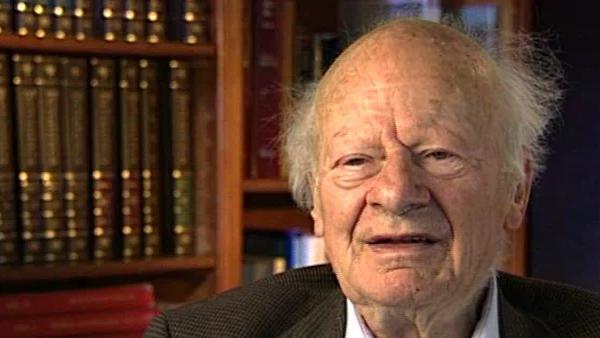NEXT STORY

The courses I took at Munich
RELATED STORIES

NEXT STORY

The courses I took at Munich
RELATED STORIES


|
Views | Duration | |
|---|---|---|---|
| 1. Beginning physics at Frankfurt University | 6 | 6567 | 01:48 |
| 2. My father's scientific influence on me | 1 | 2381 | 02:13 |
| 3. Choosing to do theoretical physics | 1867 | 00:59 | |
| 4. 1926: a fortunate time to study with Arnold Sommerfeld | 2164 | 01:28 | |
| 5. Albrecht Unsöld's work on stars | 1383 | 01:42 | |
| 6. Fritz Kirchner's work on the charge of the electron | 1197 | 01:52 | |
| 7. Physics journals at the time and Wilhelm Wien | 1164 | 02:48 | |
| 8. The courses I took at Munich | 1473 | 02:14 | |
| 9. My ideas in wave diffraction theory | 1122 | 03:11 | |
| 10. My thesis on electron diffraction in crystals | 1 | 1143 | 01:51 |

So this same room also had the physics journals and so it was a very... very much a family of people.
[Q] And the physics journals at that stage would be primarily...?
The physics journals were Annalen der Physik and Zeitschrift für Physik in Germany, and then The Proceedings of the Royal Society and The Physical Review.
[Q] You actually did receive The Physical Review already then?
Yes.
[Q] And the other person in Munich at that time is Willy Wien. I mean, just to...
Yes, Willy Wien was the Professor of Experimental Physics, a very famous person who had discovered that the maximum of the spectrum of a hot body shifted according to temperature. When it got hotter the spectrum got bluer, and that was one of the bases of Planck's discovery of quantum theory in 1900. So Willy Wien was a famous man, then mostly interested in so-called canal rays, that is rays of positive particles, protons, and investigating their properties, and he was known as a rather severe examiner in PhD examinations. For instance he almost flunked Werner Heisenberg because Heisenberg had not paid enough attention to experimental physics.
[Q] And microscopes in particular.
Microscopes. Yes, well the examiner had to ask three questions, so he asked Heisenberg about an astronomical telescope, a terrestrial telescope and a microscope, and Heisenberg couldn't answer any of them. After which he was justified in failing him, and it made a great impression on Heisenberg so that later he invented the gamma ray microscope to illustrate the uncertainty principle.
The late German-American physicist Hans Bethe once described himself as the H-bomb's midwife. He left Nazi Germany in 1933, after which he helped develop the first atomic bomb, won the Nobel Prize in Physics in 1967 for his contribution to the theory of nuclear reactions, advocated tighter controls over nuclear weapons and campaigned vigorously for the peaceful use of nuclear energy.
Title: Physics journals at the time and Wilhelm Wien
Listeners: Sam Schweber
Silvan Sam Schweber is the Koret Professor of the History of Ideas and Professor of Physics at Brandeis University, and a Faculty Associate in the Department of the History of Science at Harvard University. He is the author of a history of the development of quantum electro mechanics, "QED and the men who made it", and has recently completed a biography of Hans Bethe and the history of nuclear weapons development, "In the Shadow of the Bomb: Oppenheimer, Bethe, and the Moral Responsibility of the Scientist" (Princeton University Press, 2000).
Tags: Annalen der Physik, Zeitschrift für Physik, The Proceedings of the Royal Society, The Physical Review, Wilhelm Wien, Werner Heisenberg
Duration: 2 minutes, 49 seconds
Date story recorded: December 1996
Date story went live: 24 January 2008